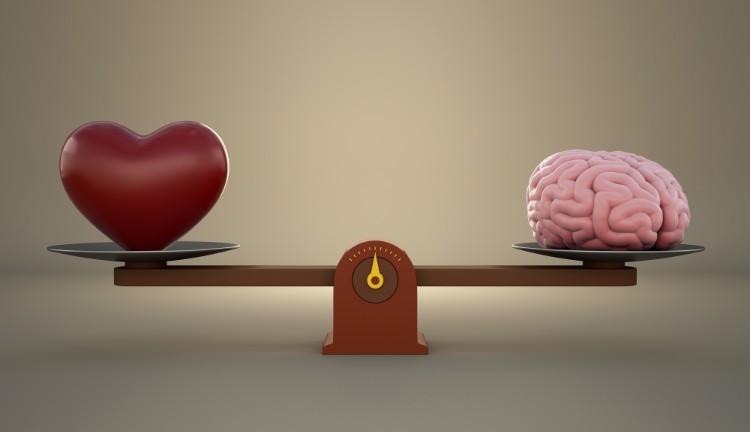We are not one-dimensional beings — physicality wise, personality wise or otherwise. People are complex, with skills, talents and emotions and intricacies in each of those categories. Emotions are not simple feelings that are experienced and moved past; they can be utilized, strengthened and employed for betterment. Harnessing this immense potential that emotions possess is the aim of emotional intelligence, or EI.
The many facets of EI have been studied by increasing numbers of professionals and organizations in order to allow it to be employed by the masses, especially in the professional atmosphere. Harrison Monarth is one expert in this field. He is the CEO and founder of GuruMaker, a team of executive coaches and leadership development experts with a unique blend of experience in business, acting and psychology.
According to Monarth, “Emotional intelligence is the ability to both recognize your own emotions [and] understand your own emotions, and the impact they have on your thinking, on your behavior, as well as how your emotions impact the thinking and behaviors of others, the feelings of others.” Taking that first component of the definition a step further, he elaborated: “Emotional intelligence is being able to not just understand all of this but also to manage it, to not just regulate your emotions, for more productive outcomes.”
Although this is not the sole definition of EI, it is the general two-pronged consensus people concede to in attempts to describe this important skill. With multiple definitions floating around out there, Harrison said it’s important to delineate that EI isn’t just one thing but “a whole bunch of characteristics and traits that we have, and we are better in some areas and we are not so great in others.”
Who wields this complicated capability? We all do — from front-line workers to executive leaders. It just looks a little different depending on the environment and the authority of the person practicing it.
Alicia Del Real, president, partner and executive coach for the Center for Advanced Emotional Intelligence has curated six pillars for what EI looks like in a business environment. “First is a minimum of defensiveness and arrogance,” she said. “Two is accurate empathy, being able to put yourself in someone else’s shoes and giving them what they need. Third is living your social values; define what you stand for and walk your talk. Four is appropriate transparency, having open and honest communication even when it makes you feel vulnerable. Five is emotional courage. Finally, the sixth condition is a tolerance of paradox ambiguity.”
Leaders act upon these pillars every day in substantial ways. One-on-one meetings held with employees and company meetings in general require the use of EI in facets such as communication and feedback.
Outside of meetings, in networking, general communication and any other function in the work environment, emotions are involved. Just as there is no escaping cognitive thinking and technical skills on the job, emotions can’t be avoided. In fact, the cognitive and emotional sides of the brain work in tandem.
Bill Benjamin is an EI keynote speaker for The Institute for Health and Human Potential. He describes the emotional and cognitive parts of the brain as two strains of an intertwined rope. “Emotions and cognitive thinking really go together, and you need both of them,” he said.
Since emotions definitively follow every employee to the workplace, it is important to display proper EI at every level in a company. However, leaders have a special demand for effective EI skills. To reach the rank of a leader, EI is becoming the determining factor. “We start careers based on cognitive skills but in order to grow in the organization we really need the emotional intelligence to support us and take us to the next level,” Del Real said.
And EI can’t just be thrown to the side after achieving high status in a company. It’s important to stay well-developed in EI as a leader to be a positive person to work with and to effectively collaborate within the organization. Del Real shared a sentiment relayed by a group of her clients about their leader before he went through EI training: “Everyone said, ‘yeah, he’s the smartest person in the room but none of us want to work with him.’ No one wants to work with someone who always has a better way of doing something.”
Not only do leaders want to avoid this attitude of adversity to collaboration, leaders want to avoid stagnation and realize their abilities to the greatest possible lengths. Del Real stated, “It’s hard for us to develop and reach our potential when we aren’t in touch with our blindspots, so it all starts with emotional intelligence.”
Is there hope for leaders who want to be a great team player and actualize their potential but who lack in certain aspects of EI? Absolutely, according to Benjamin. Whereas the IQ component of the brain is relatively fixed, EI can be improved. “the brain has neuroplasticity and the emotional part of our brain can learn,” Benjamin said. “We have certain default behaviors, but we can change them when we practice new behaviors. People can learn emotional intelligence.”
Learning programs can help individual leaders as well as entire companies grow their EI. The general methodology to fostering better EI, according to Benjamin, “starts with self-awareness, then management, then connection, and to finish out the model is personal leadership.”
The tools vary from person to person and company to company due to the nature of EI not being a singular skill. There are specific qualities that need various levels of growth within each person. The key to actualizing positive steps toward better EI once the assessment is done and strategies have been thought through is practice. “The only way to build emotional intelligence is through practice,” Del Real said. “You really have to practice it, set a goal, share it socially and then practice it, the only way to move the needle.”















